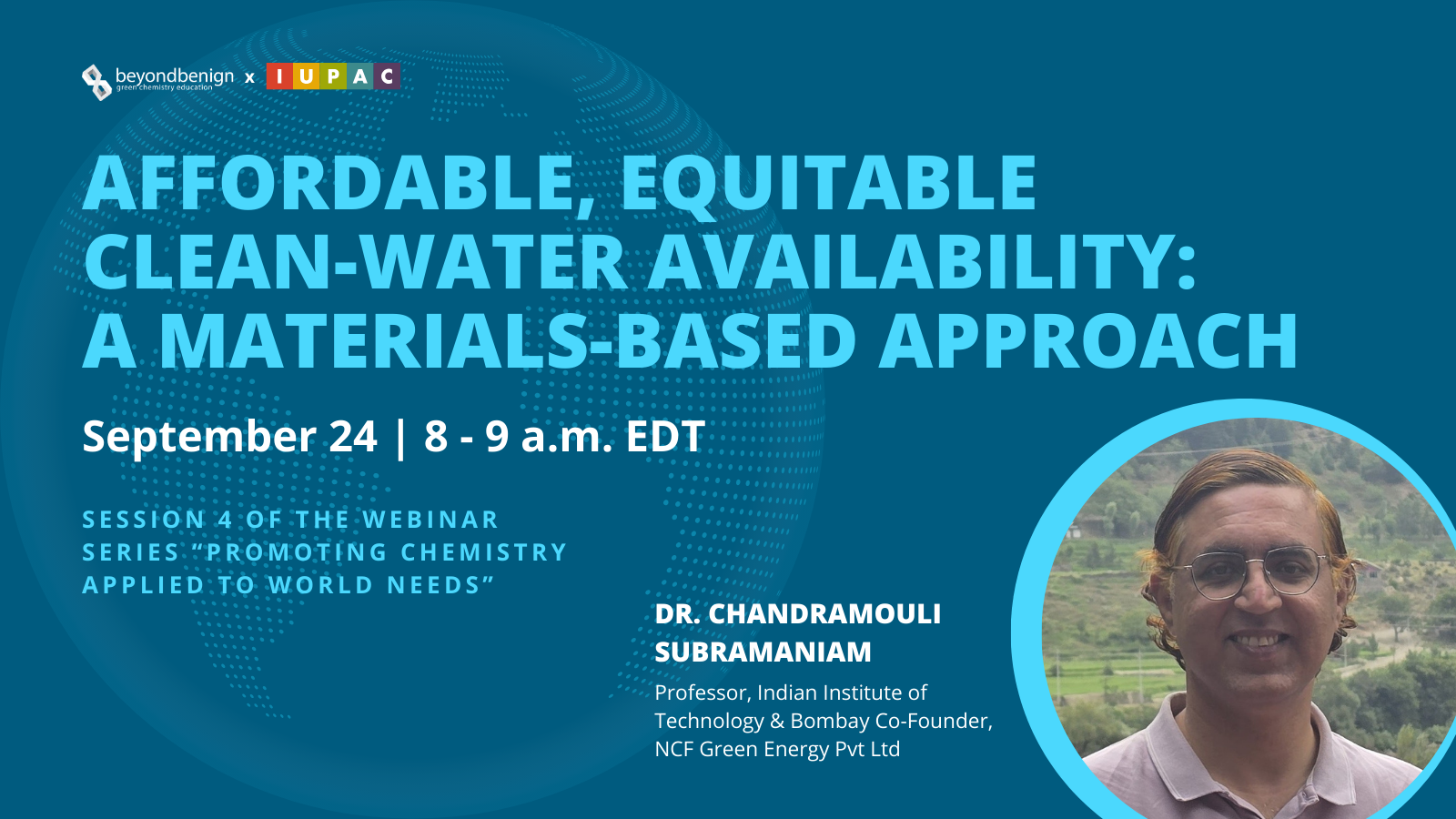
- This event has passed.
Affordable, Equitable Clean Water Availability: A Materials-Based Approach

Are you an aspiring chemist, a passionate climate advocate, or an interested member of the public? Do you want to change the world through science? Join us throughout 2025 to learn from experts in the field leading the charge to solve existential, world needs through chemistry.
During this webinar series, speakers will orient their presentations around the United Nations Sustainable Development Goals (UN SDGs) and the International Union of Pure and Applied Chemistry (IUPAC) Top 10 Emerging Technologies to demonstrate the power that chemists hold in shaping and preserving the future. Each talk will be accompanied by short videos on the topic geared toward high school and university chemistry students as well as the general public.
This series is hosted by Beyond Benign and the IUPAC Committee on Chemical Research Applied to World Needs (CHEMRAWN). Register below and invite your friends and colleagues!
Department of Chemistry, Indian Institute of Technology Bombay
The total volume of water on earth is constant at 1021 liters. India has 4% of the global fresh-water resources with ~20% of the global population. Therefore, majority of Indian sub-continent is suffering from acute water stress. Equitable access to clean potable water is both a direct, important target of United National Sustainable Development Goals (SDG 6) and simultaneously carries significance to several other SDGs (SDG 3,7,13,15). Therefore, sustainable, cost-effective and affordable recovery of freshwater from contaminated water feedstock is the need of the hour to ensure it equitable access.
Solar-thermal interfacial evaporation offers immense and hitherto untapped potential for energy-efficient, sustainable freshwater production. However, fundamental challenges in materials and system-design result in low water evaporation rates (Rw < 1-2 kgm-2h-1) and even lower solar-freshwater productivity (SWP). Further, the lack of thermally and chemically stable materials that can operate in extreme salinities such as seawater without fouling or degrading is a major bottleneck that limits the wider adaptation of the technology.
This Talk would describe an ultra-thin, porosity-engineered polymeric scaffold (poly-HIPE, PH) that is anisotropically coated with nanostructured carbon florets (NCF) to deliver high solar-thermal conversion efficiency (η-STC = 84%), excellent Rw (6.5 kgm-2h-1) and exceptional SWP (3.5 Lm-2h-1) from sea-water. A few salient features of the material are
(a) Thinnest such membrane with no-signs of fouling over 30 days in sea-water, achieving
(b) Salt-rejection of ~95% with facile reusability for over 30 days,
(c) Producing freshwater of ~20 liters per m2 area per day at
(d) Lowest CO2 footprint (< 3 W/L, ~3 g /L)
Fundamental insights of materials-design to address the exothermic water-evaporation step that are synergized with systems-design approaches to achieve these key performance indices would be discussed in the talk.

